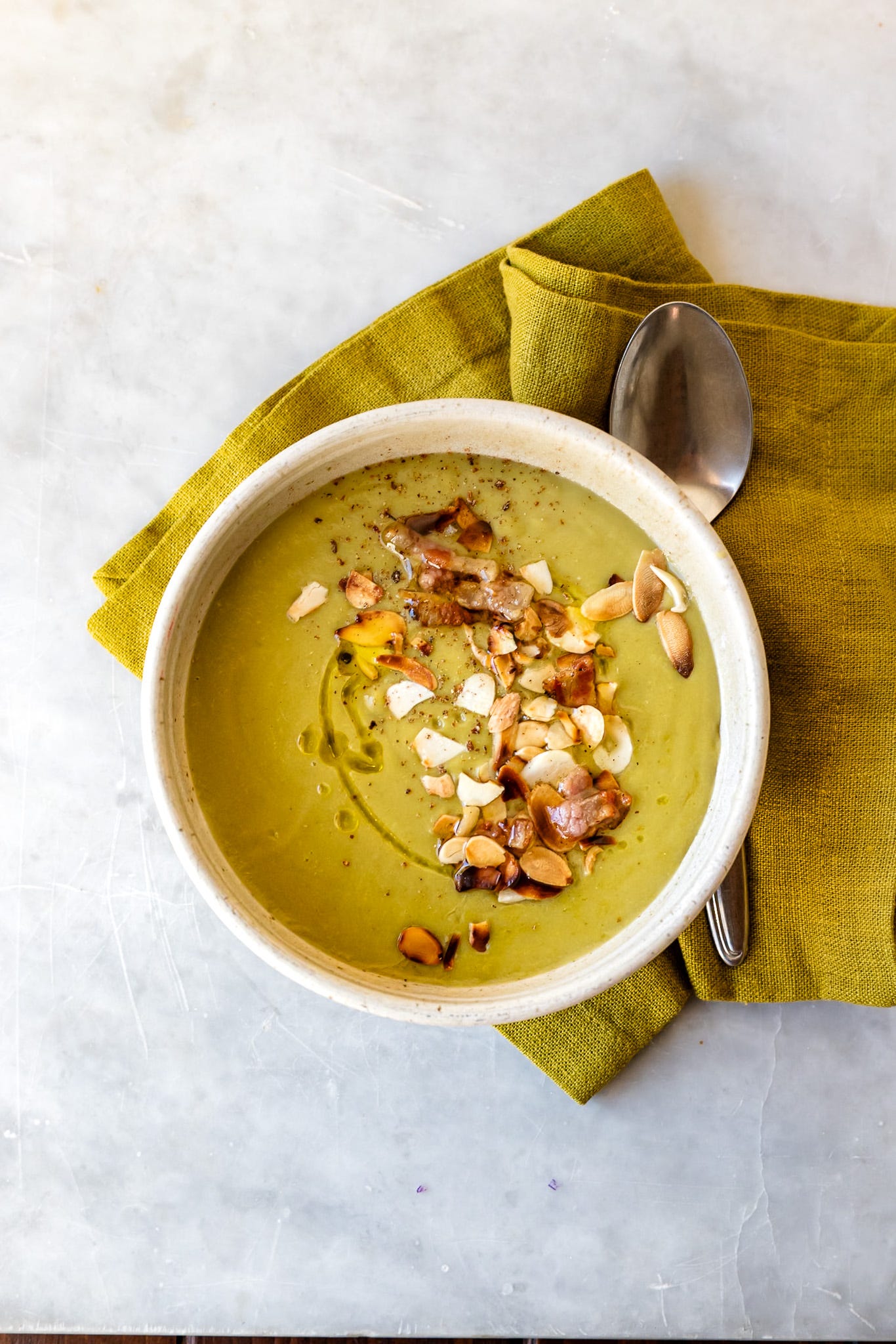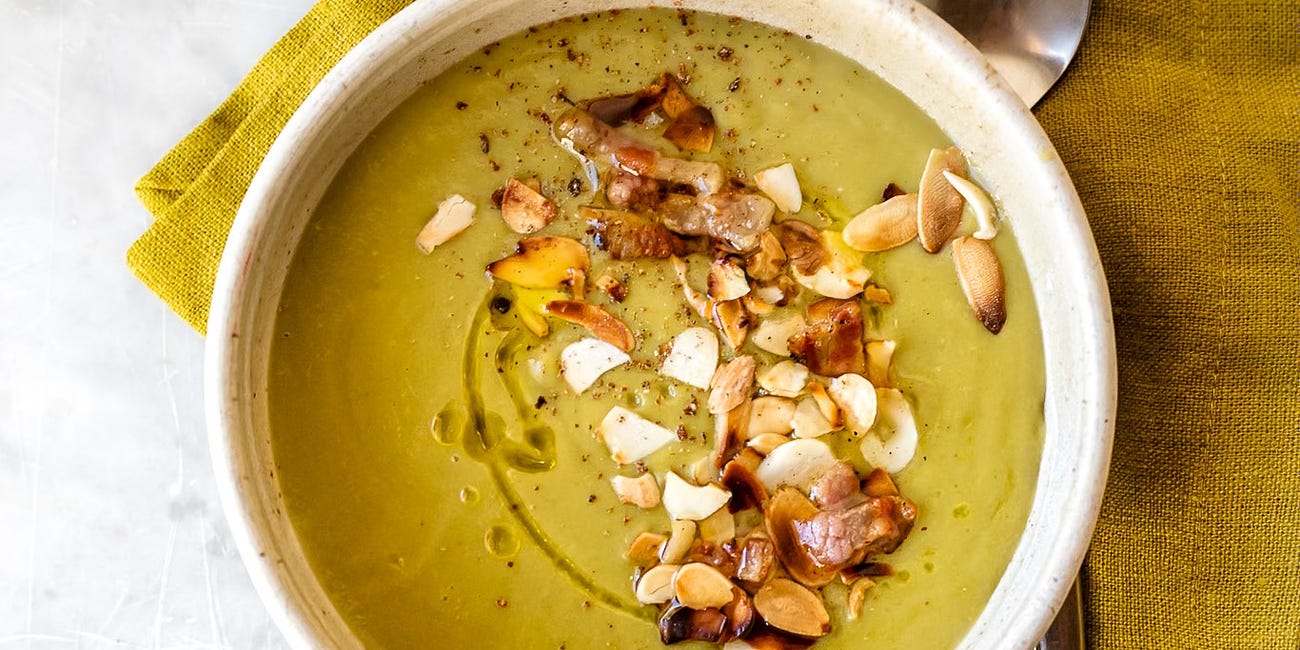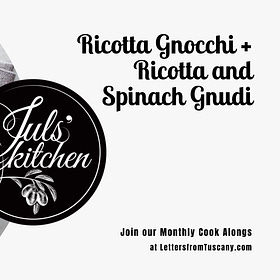Channel the Italian waste-not spirit with your vegetable scraps
My method for making vegetable stock from scraps, plus a favourite winter soup, packed with seasonal vegetables, perfect for warming up a freezing night
Ciao my dear friends,
let me start with a huge thank you for your warm feedback to the replay of our monthly cook along. The recording of the class will always be available here on Substack for all the paid subscribers. Our aim is to slowly build an archive of seasonal live video lessons.
Speaking of this, a brief remainder. The next Cook Along will be SUNDAY, February 11th at 9.00 pm CET - 3.00 pm EST - 12.00 pm PST. We’ll make two Tuscan Carnival treats: Florentine rice fritters and fried cenci, thin, crisp, sugary pastries. A replay will be available afterwards.
And before leaving you with today’s letter, all about vegetable scraps and the way I like to use them in the kitchen, let me share the new episode of The Crumb, The Bake from Scratch podcast. Guess who’s the latest guest? You can listen to my chats with Brian about Italian Cuisine and Cucina Povera here.
And now, to the vegetable scraps. You will also find two recipes, one for my vegetable scrap stock, available for everyone, and one for a creamy kale, leek, and potato soup, a true surprise during our winter cooking classes.
My approach to cooking with vegetables radically changed about four years ago, during the first lockdown of the Covid pandemic in Italy. At that time, I was three months pregnant, living next door to my parents and grandmother in the open countryside, with a job that I could already do from home. Except for not seeing friends and relatives, the only thing that changed was how we would shop. Tommaso would organize weekly visits to the supermarket, shopping for the extended family, and I would take care of the fresh fruits and vegetables.
Because of the government restrictions that halted open markets for a while, our friends, who usually had a stall at the local market, started to deliver weekly produce boxes to their customers. I would draw up long lists of requests dictated by an urgency to stock the pantry and fridge with fresh produce, not knowing how the situation would evolve, and by my cravings for bitter leaves and citrus fruit.
Once a week, huge boxes of winter vegetables would be delivered to our front door: fat fennel bulbs with feathery fronds; heavy Savoy cabbages and bunches of carrots; bouquets of artichokes and bitter winter leaves. I would immediately prepare all of these fresh ingredients, as it was a grueling task to fit all the vegetables a pregnant woman craved into a standard-sized fridge.
Until that moment, I would throw all the vegetable scraps into the compost bin without a second thought, assured that they would then become fertile soil for our summer vegetable garden. But I started to notice that I was discarding a large portion of my precious bounty.
It would break my heart, especially since I was dealing with vegetables so fresh, seasonal, and local. That’s when I started to find ways to upcycle those scraps.
I roasted the tough outer layers of fennel with olive oil, lemon juice, garlic, and grated Parmigiano Reggiano, and thinly sliced the outer leaves of Savoy cabbage to stew with water, olive oil, and patience. The hard stems of cavolo nero, Tuscan kale, I roughly chopped and cooked down with a couple of potatoes to become a green winter soup.
What really upped my cooking game, though, was the stock I began making from vegetable scraps. Whatever I could not immediately cook into another dish—a soup, a stir-fry, or a tray of roasted vegetables—I would trim and collect in a freezer bag. Anything went: peels, outer leaves, hard stalks, ends, wilted herbs. Then, when I had enough scraps, I would put all these precious bits into a large stockpot of water on the stove, and let the mixture simmer for hours, concentrating all the flavors and aromas. In the end, I would be rewarded with an umami-packed stock, so rich and intense that it could bring even the simplest dish to another level.
Since then, I’ve been collecting my scraps on a weekly basis, and I always have a ready supply of homemade vegetable stock in the fridge for any sudden soup cravings. What was born in my first months of pregnancy as a way to upcycle the scraps of all the vegetables I was craving is now the starting point of many dishes that are feeding my family of three.
Ready to start channeling the Italian waste-not spirit?
Here’s my method for making vegetable stock from scraps, plus a favourite winter soup, packed with seasonal vegetables, perfect for warming up a freezing January night.
How do you like to use your vegetable scraps in the kitchen? Any tip, recipe, or piece of advice to share? I’ll be reading you in the comments.
Assembling Scraps
Once a week, when I shop for vegetables at the market or at our local favourite producer, I arrange all my purchases on my table and start sorting the produce: Some will be cooked immediately and served for lunch, others will be blanched and frozen, or just stashed in the fridge for now. I collect all the trimmings and scraps for my stock. Of course, you don’t have to do your prep all at once; you can collect your scraps over time, adding ones from what you cook each day to a plastic zip-top storage bag in the freezer, until you’ve accumulated a big enough supply to make a batch of stock. Freeze them for up to about 8 months.
Almost anything goes: the tough stems of spinach, cavolo nero, and chard; the outer layers of cabbage and fennel; the hard stalks of broccoli and cauliflower; the trimmed ends of green beans and zucchini. Save your celery leaves; the peels of carrots, tomatoes, potatoes, and onions; the green ends and roots of leeks and scallions. Wilted herbs work, too: Toss in all your languishing parsley, basil, and thyme, and throw in a couple of bay leaves for good measure.
Mushrooms are a precious source of umami, adding depth of flavour to your homemade stock; save your cleaned and trimmed stems or other scraps. If you don’t happen to have mushrooms in your mix, you can add a handful of dried mushrooms—porcini or shiitake do nicely—to your stock when you make it.
There are just a couple of vegetables that you should avoid: Asparagus and artichokes will produce a bitter stock. Try to balance your other vegetables, and avoid adding too many scraps from cruciferous vegetables, such as cabbage and broccoli, as they might add a bitter or sulfurous note if they dominate the mix.
As you’ll notice, I also have a secret ingredient: a piece of Parmigiano Reggiano rind, for extra umami and saltiness—you can save these in the freezer, too. Once your stock is ready, continue the waste-not philosophy and don’t discard the rind. Cube it and add it to a soup, or eat it as a snack.
RECIPE - Vegetable Scraps Stock
Use this waste-not vegetable stock to make risotto, start soups and stews, and poach chicken.
Makes 3 quarts
6 quarts/6 liters water
About 2 pounds/1 kg mixed vegetable scraps
2 ounces/60 grams Parmigiano Reggiano rind
1 tablespoon coarse sea salt
Fill a large stockpot with the water. Add the vegetable scraps and the Parmigiano Reggiano rind. Bring the water to a boil over medium-high heat.
When the water begins to boil, add the salt to the pot, reduce the heat to low, and simmer for three hours, until the stock has reduced to half of the initial amount.
Strain the stock into a large clean pot and season to taste with more salt. If you don’t plan to use the stock right away, let cool to room temperature, then refrigerate.
RECIPE - Tuscan Kale, Leek and Potato Soup
Whenever I make ribollita with cavolo nero, Tuscan kale salad, or Tuscan kale pesto, I make this soup. I just cannot imagine to throw the stalks away, even though they are too hard and woody to use them in a salad or a soup that is not blended. So a couple of years ago I came with the idea of this soup during a cooking class, using a spare potato and the end of a wilted leek.
It was a surprise, and it still is every time I serve it during a cooking class. Smooth, velvety, with a delicate flavour, it’s like a warm embrace that envelops you in a sense of well-being.
Link Love
Last week a new episode of The Crumb, The Bake from Scratch podcast, was released and guess who’s the latest guest? You can listen to my chats with Brian about Italian Cuisine and Cucina Povera here.
[REMINDER] The Next Cook Along will be SUNDAY, February 11th at 9.00 pm CET - 3.00 pm EST - 12.00 pm PST. We’ll make two Tuscan Carnival treats: cenci—Tuscan fried dough rugs—and rice fritters. I can’t wait! Who needs a good excuse to fry some delicious food?
You can watch the replay of the last Cook Along where we made Ricotta Gnocchi and Spinach and Ricotta Gnudi here.









Great ideas! I'm not the cook in the kitchen-- I'm the one in charge of sorting the trash; in Italy, that's a very complex operation. You just made my life so much easier!
3 hours seems like a very long time for boiling a veggie stock. They are pretty mushy after about an hour.....